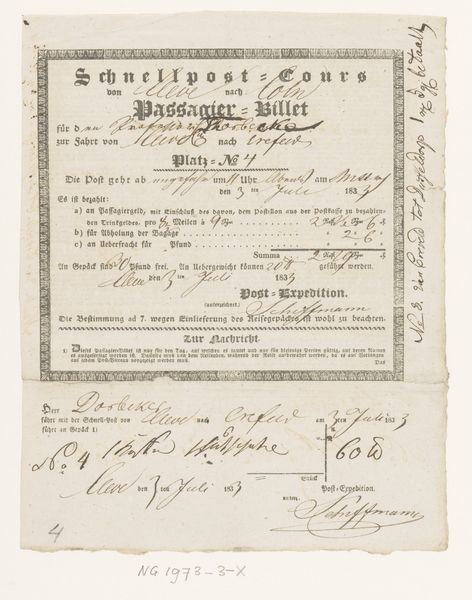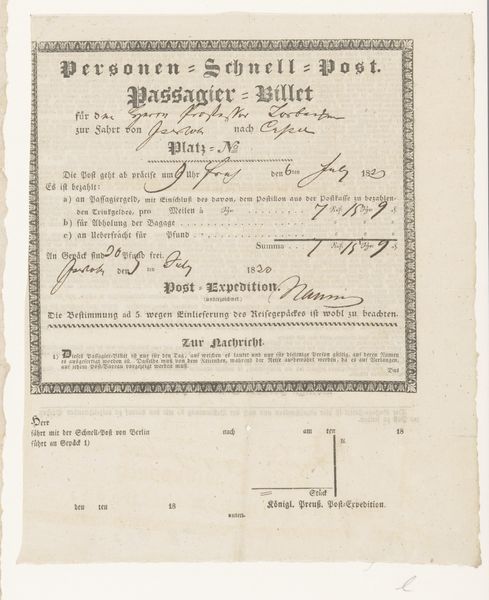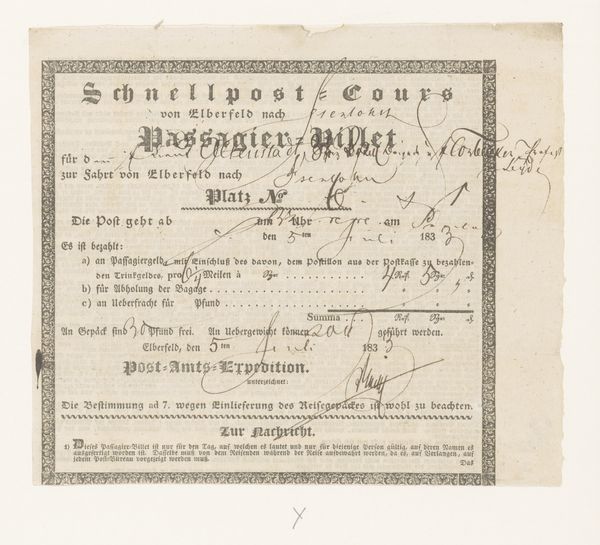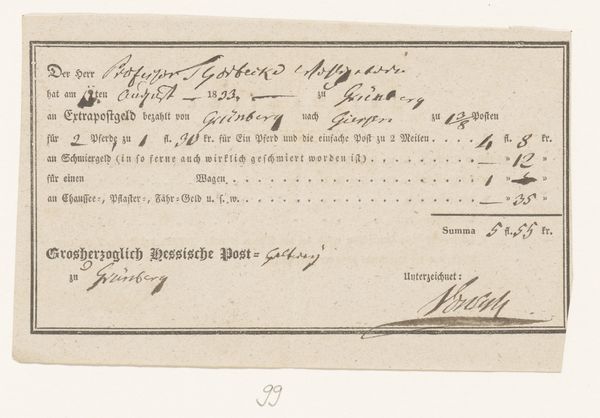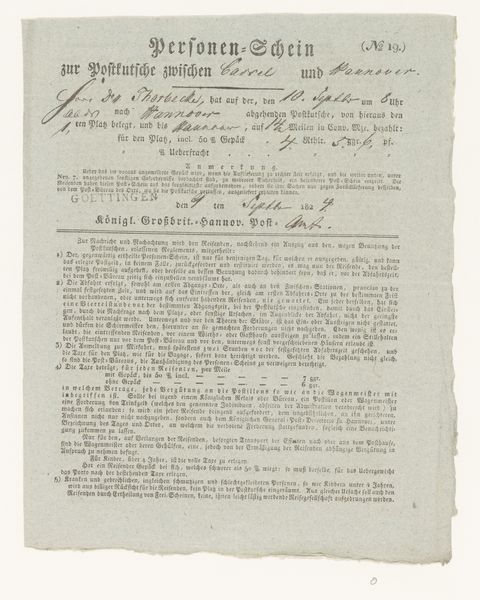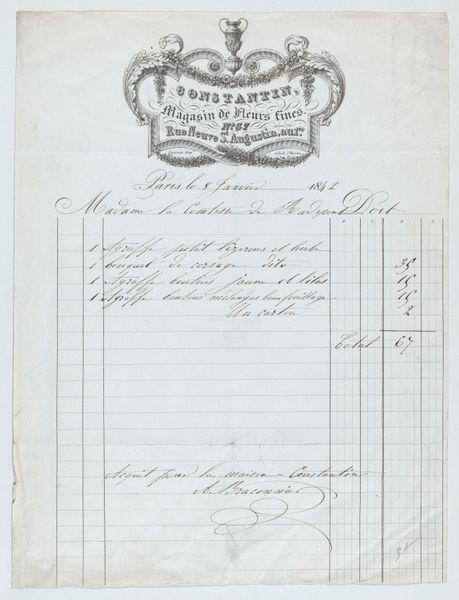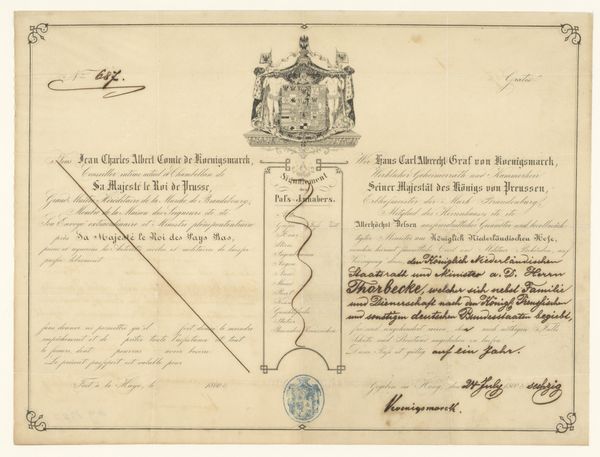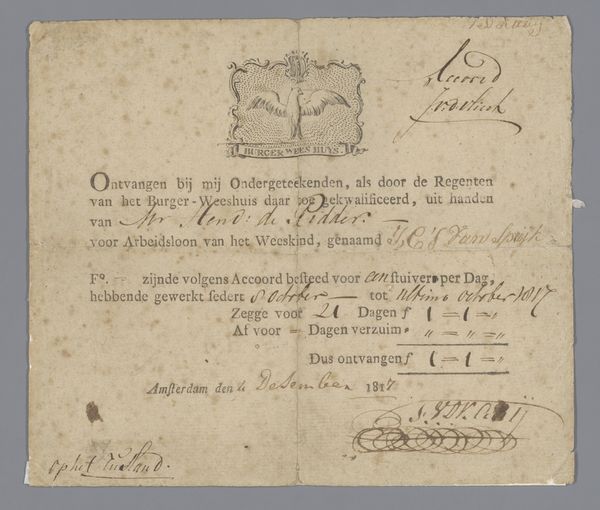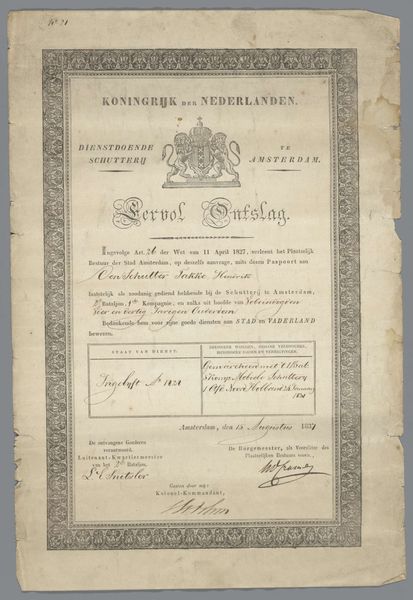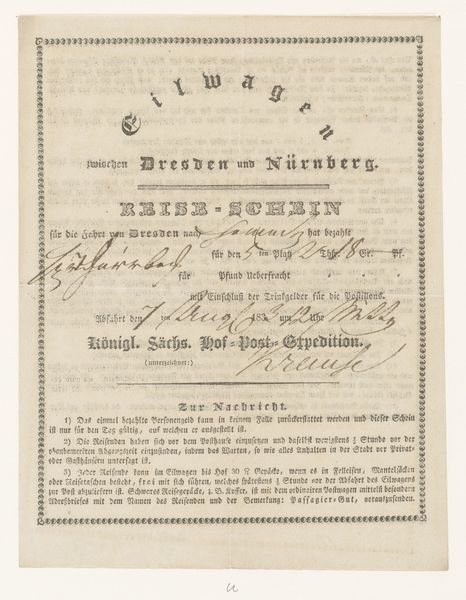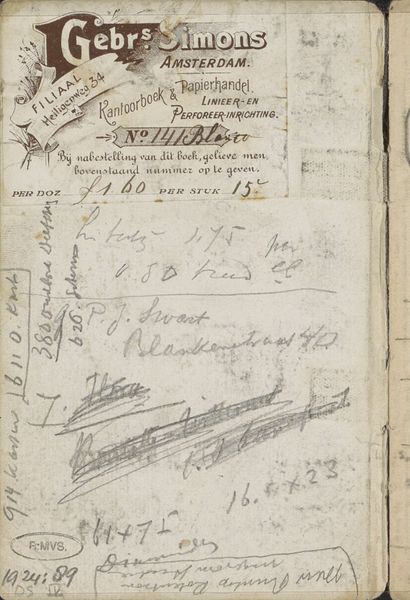
graphic-art, print, paper, typography
#
graphic-art
# print
#
paper
#
typography
Dimensions: height 22 cm, width 18.8 cm
Copyright: Rijks Museum: Open Domain
Curator: This work, simply titled "Reisdocument," originates possibly from 1833 to 1839, and it’s held in the collection of the Rijksmuseum. What’s your immediate impression? Editor: My eyes are immediately drawn to the graphic layout, the structured text blocks surrounded by decorative borders and flourishing handwriting annotating this historical document, evoking a strong sense of faded formality. It looks almost like an official proclamation, but clearly personal at the same time. Curator: Indeed. "Reisdocument" translates to "Travel Document", so this would have served as a ticket or a receipt. What's intriguing is that its anonymous creation and survival offer insights into 19th-century postal services between Cassel and Berlin. Imagine the socio-political implications behind its paper trail and travel regulations. Editor: From a formalist perspective, notice how the typography and border design contrast with the handwritten notations scribbled along the edges and squeezed into the form itself. This highlights the tension between the official and the individual. Look at how those handwritten annotations push past the confines of the ticket to show not only wear and tear but the very active nature of this document as part of the historical record. Curator: Absolutely! Each stamp, initial, and marginal note tells a story – marking stages in its physical movement and interactions with the authorities. We can infer volumes about how state and individual interests intersect from details like "Schnellpost-Cours"—referencing the fast postal service. It is suggestive of a society emphasizing communication. Editor: And how interesting is it to consider the relationship between information and decoration. The typographic components present clearly defined text. Whereas, we get this visual disruption presented through handwriting. Considering this visual and informational friction suggests something of a social friction at work. Curator: It's a powerful example of ephemera that opens multiple historical and visual dialogues, even across time. Editor: Precisely, I'm left contemplating how such an ordinary, utilitarian artifact embodies so much social and formal complexity.
Comments
No comments
Be the first to comment and join the conversation on the ultimate creative platform.
